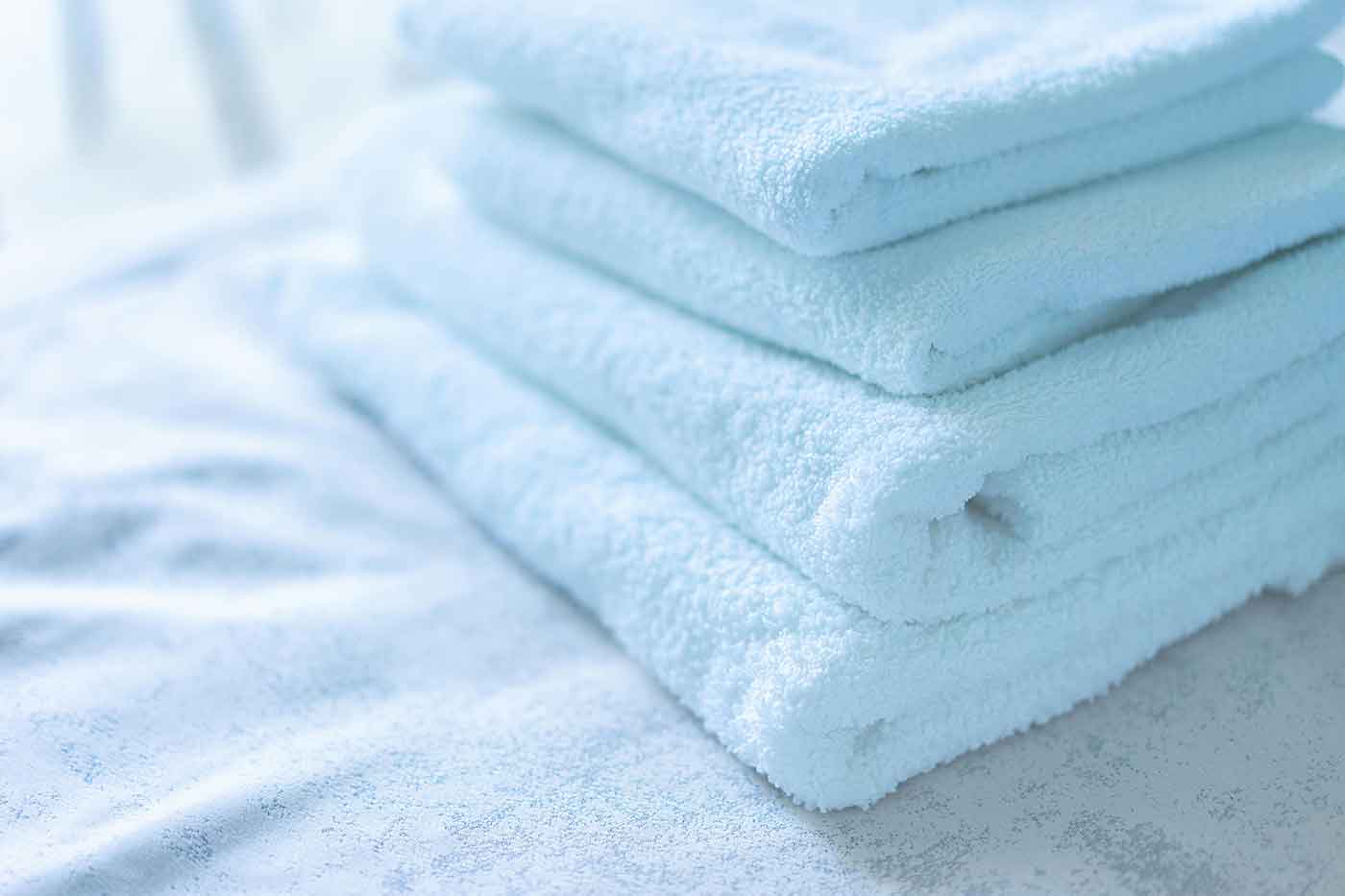There’s nothing quite like stepping out of a shower and wrapping up in a soft, fluffy towel. Unfortunately, many households find that their towels become rough and scratchy over time, even with regular washing. The good news? Softer towels are entirely achievable without investing in pricey detergents, commercial softeners, or a new washer and dryer setup.
The key lies in understanding how towel fibers react to standard laundry practices. Elements such as detergent residue, water hardness, excessive heat, and improper storage all contribute to stiff, less absorbent towels. With a few expert-backed adjustments to washing and drying routines, anyone can restore their towels to hotel-level softness—and keep them that way.
The following guide breaks down the lesser-known but highly effective strategies to achieve and maintain soft, fresh towels at home.
1. Strip Detergent and Mineral Buildup with White Vinegar
Over time, towels accumulate residue from detergent, fabric softeners, and hard water minerals. These substances coat towel fibers, leading to stiffness and reduced absorbency. To counter this, distilled white vinegar serves as an effective and natural solution.
Add 1 to 2 cups of white vinegar directly into the commercial washing machine drum during a hot or warm water cycle without any detergent. Vinegar’s acidity helps dissolve buildup, allowing towel fibers to breathe and function properly. This method works particularly well in areas with hard water and can be used once or twice a month as a maintenance step.
2. Use Baking Soda Separately to Deodorize and Soften
While vinegar tackles buildup, baking soda works to neutralize odors and gently lift fibers, contributing to a softer feel. For best results, baking soda should be added to a separate wash cycle—never used in the same load as vinegar, as the two neutralize each other chemically.
Add about half a cup of baking soda directly into the drum before starting the wash. This is particularly helpful for towels that have developed a musty or stale scent, and it also boosts softness without damaging the material.
3. Reduce Detergent Quantity—Less Really Is More
One of the most common causes of stiff towels is excess detergent. While it may seem that more soap would yield cleaner results, the opposite is often true. Too much detergent leaves a residue on fabrics, especially in high-efficiency washing machines, where less water is used in the rinse cycle.
To maintain soft towels, always use the manufacturer’s recommended amount—or even slightly less. For heavily soiled towels, pre-soaking or using a second rinse cycle is more effective than simply adding extra detergent. Over time, using less detergent not only improves towel texture but also reduces wear on fabrics and washing machines.
4. Avoid Fabric Softeners: They Work Against Towel Softness
Though fabric softeners may offer a temporary illusion of softness, they often leave behind a waxy coating that blocks towel fibers from properly absorbing moisture. This coating builds up over time, making towels feel less soft and reducing their functionality.
Instead, rely on natural alternatives like vinegar or wool dryer balls to maintain softness. For a mild scent, a few drops of essential oil on a dryer ball can provide freshness without compromising performance.
5. Choose the Right Water Temperature
Water temperature has a significant impact on towel care. Hot water (around 140°F) is best for white towels, as it effectively removes oils, residues, and bacteria. Colored towels, however, should be washed in warm water (approximately 104°F) to prevent fading and fiber damage.
Using cold water consistently may not fully remove build-up or body oils, especially for towels used daily. Adjusting water temperature based on towel color and material ensures cleanliness while preserving softness and color integrity.
6. Wash Towels Separately for Best Results
Towels should be washed separately from clothing and other textiles. The reason is twofold: towels produce significant lint, which can transfer to garments, and they require a different washing approach in terms of detergent, temperature, and drying.
Washing towels together allows for a uniform clean and prevents additional friction caused by mixing heavy and lightweight fabrics. It also reduces pilling and fiber wear, helping to maintain softness and durability over time.
7. Improve Drying Techniques for Fluffier Towels
Drying methods are just as important as washing when it comes to towel softness. The following techniques help preserve fibers and enhance fluff:
- Use wool dryer balls or clean tennis balls in the commercial dryer. These help lift and separate towels, reducing clumping and speeding up drying time.
- Avoid overdrying, as high heat can damage fibers and leave towels feeling brittle. A medium heat setting is ideal, and towels should be removed promptly once dry.
- Shake towels before and after drying to fluff up the fibers and maintain volume. This small step helps prevent compaction and improves texture.
For an even more natural approach, towels can be air-dried outdoors when weather permits. Fresh air and sunlight not only help soften fabric but also act as natural disinfectants.
8. Store Towels the Right Way
Even after proper washing and drying, how towels are stored affects how soft they remain. Towels should be kept in a dry, well-ventilated space, not crammed tightly into cabinets where air can’t circulate.
Rolling towels instead of folding can help preserve their loft while maximizing storage space. Additionally, avoid storing damp or warm towels, as trapped moisture leads to mildew and lingering odors that can harden fabric over time.
9. Recognize When Towels Need Replacing
Despite the best efforts, towels don’t last forever. Signs that a towel has reached the end of its life include:
- Persistent roughness or stiffness, even after washing
- Frayed edges or thinning areas
- A damp, musty smell that won’t wash out
- Noticeable loss of absorbency
Most quality towels last between 1 to 3 years, depending on usage and care. When a towel no longer serves its purpose, repurposing it for cleaning tasks or donating to animal shelters is a responsible way to extend its utility.
The Final Word: Consistency Is Key
Achieving softer towels isn’t about gimmicks or over-the-top products—it’s about consistent care practices. From choosing the right washing and drying methods to using fewer chemical additives, each step contributes to maintaining towel softness, absorbency, and freshness.
With a few thoughtful adjustments to laundry habits, any household can enjoy towels that feel like new—soft, inviting, and ready to deliver everyday comfort.




